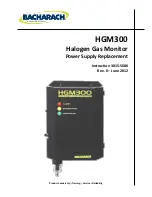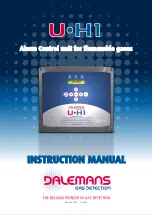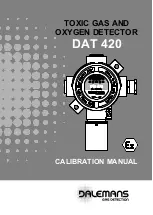
2. Important Notices on Safety
2-1. Danger cases
- 5 -
2
2.
Important Notices on
Safety
To maintain the performance and use the gas detector safely, observe the following instructions of
DANGER, WARNING and CAUTION.
2-1. Danger cases
2-2. Warning cases
WARNING
Sampling point pressure
•
The gas detector is designed to draw gases under the atmospheric pressure. If excessive
pressure is applied to the gas inlet (GAS IN) and outlet (GAS OUT) of the gas detector,
measured gases may leak out from its inside and may cause dangerous conditions. Be sure
that excessive pressure is not applied to them while used.
•
Do not connect the gas sampling hose directly to a location with a pressure higher than the
atmospheric pressure. The internal piping system may be damaged.
Air calibration in atmosphere
•
When air calibration is performed in the atmosphere, check the atmosphere for freshness
before beginning it. If interference gases exist, the adjustment cannot be performed properly,
thus leading to dangers when the gas leaks.
Battery level check
•
Before use, check that there remains sufficient battery power. When the gas detector is not
used for a long period, the batteries may be exhausted. Never fail to replace them with new
ones before use.
•
If a low battery voltage alarm is triggered, gas detection cannot be conducted. If the alarm is
triggered during use, turn off the power and promptly replace the batteries in a safe area.
DANGER
About use
•
While conducting measurement in a confined space such as inside of the gas storage tank
and pipeline, do not lean over or look into the gas storage tank or pipeline. It may lead to
dangers because oxygen-deficient air or other gases may blow out.
•
Oxygen-deficient air or other gases may be discharged from the
gas exhausting outlet (
GAS
OUT). Never inhale the air or gases.






































